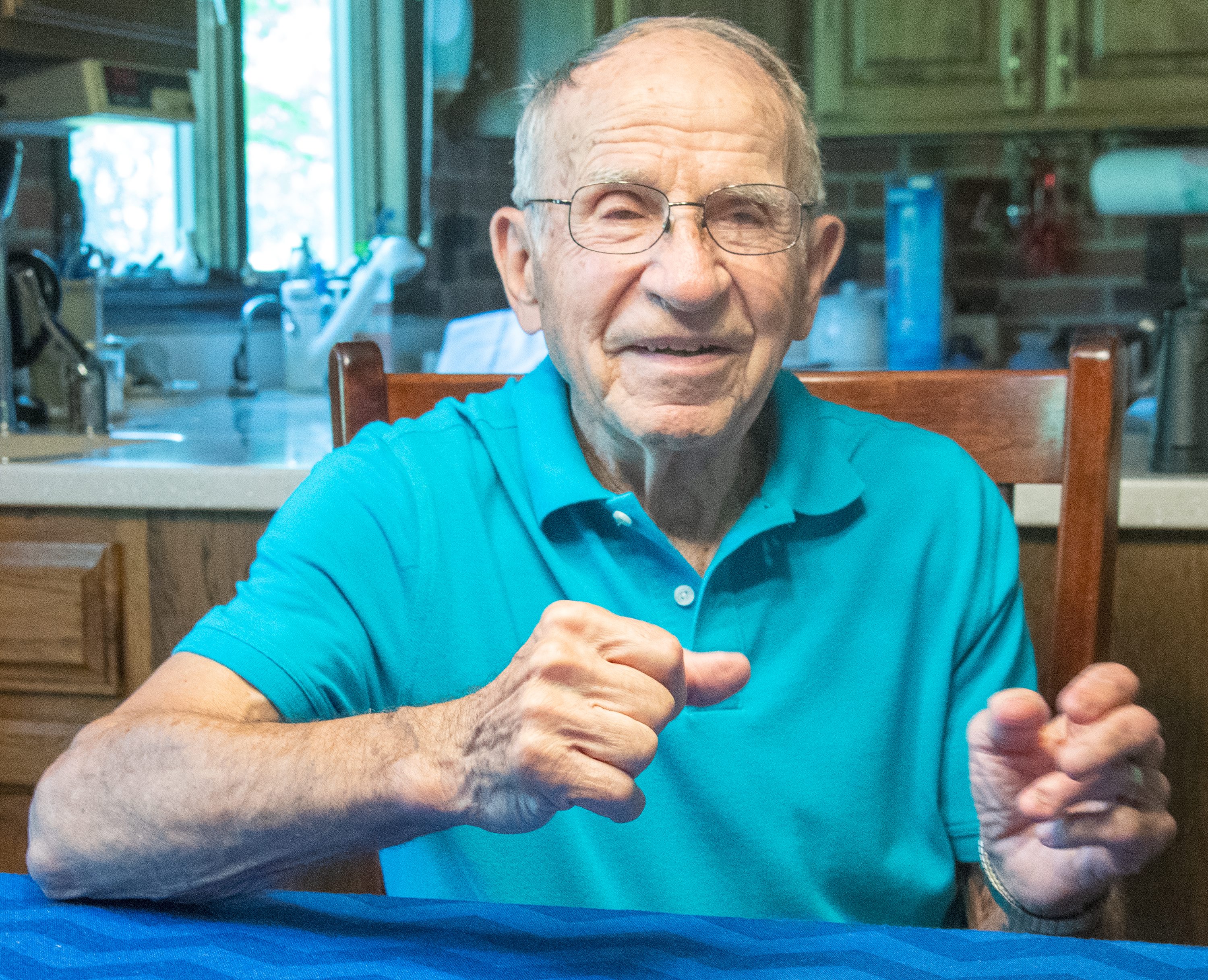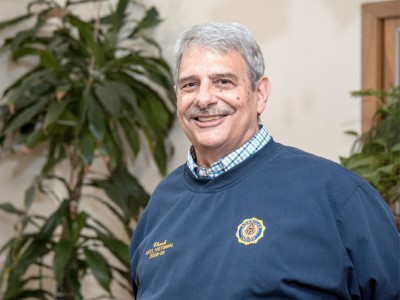Joseph T. Houska
By Paul Wood

Photo By Robin Scholz/The News-Gazette
WHITE HEATH — Now largely forgotten, the Suez Crisis threatened to set off a major war in the Mideast.
Navy veteran Joseph T. Houska said that stand-off between French and English forces, and Egypt, could have extended his service in the Navy.
Now 85, he came from an Iowa farm family.
He enlisted in the Navy on his 20th birthday and served on active duty from 1952 to 1956, followed by four years in the Navy Reserves.
An older brother was headed to Korea as a Marine, with the war still going on, and he thought he might go there, too. (His younger brother would be drafted later and do a tour of duty in Germany.)
Instead of going to the Pacific, Houska trained at San Diego and Naval Station Great Lakes north of Chicago to become an electrician for aircraft carriers and on land for some of the time.
After graduating, Houska went to Sanford, Fla., where there was a Naval Auxiliary Air Station.
He had experience with crash boats, air-sea rescue boats, the Navy stationed there. As part of his land duty, he was also trained to be a motion picture projectionist.
Then he was sent to Rhode Island to join the USS Antietam.
At the time, the Antietam was an anti-sub warfare carrier meant to search for submarines in the Atlantic.
“They figured the East Coast was the back door for the Soviet subs, while we were engaged in the Pacific,” Houska said.
There was a lot for an electrician to do on a ship the size of the Antietam. By burning fuel oil, steam went to the turbines that powered the electrical generators; the operation ran 24/7 when the ship was underway.
The ship was almost 1,000 feet long, but launching or landing an airplane on the carrier required every foot of it, Houska said.
The Antietam would go out for three weeks at a time, with destroyers as escorts.
The North Atlantic could be a dangerous place.
Houska would watch escort destroyers, which were much smaller than an aircraft carrier, ride the top of a 30- to 40-foot swell, then disappear from sight as the sea roared ferociously.
As part of military exercises, Houska also visited Guantanamo Bay, Cuba, and was on the ship when “The Ed Sullivan Show” visited it in New York. But electricians didn’t get to go topside.
Near the end of Houska’s time in, Israel invaded Egypt as part of a series of wars in the region.
Egyptian President Gamal Abdel Nasser had nationalized the Suez canal, and the French and English blockaded it.
U.S. armed forces were put on alert.
“Everybody who was short (near the end of service) had their time in extended,” Houska said.
Houska had already been admitted to Iowa State University and had only a couple of weeks left. The Navy decided a few personnel could return to the U.S. on planes delivering and taking away mail from the ship.
With the end of the alert, eventually Houska was one of those allowed to leave in December 1956.
On the G.I. Bill, he earned college degrees, moved to the University of Illinois for further education and taught industrial education for 33 years. In 1972, he and three other Central teachers — he taught there 29 years — built his house north of White Heath.
More importantly, he married his wife, Evelyn, shortly after getting his bachelor’s degree.
He flew to Washington on an Honor Flight in 2015 and was very moved by war memorials there.
Do you know a veteran who could share a story about military service? Contact Paul Wood at pwood@news-gazette.com.
Read more stories from local veterans:
 David Stangl
CHAMPAIGN — Whether it was protecting state-of-the-art weaponry or chasing after locals who’d broken through the perimet …
David Stangl
CHAMPAIGN — Whether it was protecting state-of-the-art weaponry or chasing after locals who’d broken through the perimet …
 Mike Sandone
URBANA — About 22 military veterans commit suicide every day. Marine Sgt. Mike Sandone, 40, is a physical fitness expert …
Mike Sandone
URBANA — About 22 military veterans commit suicide every day. Marine Sgt. Mike Sandone, 40, is a physical fitness expert …
 Chuck Zelinsky
CHAMPAIGN — Chuck Zelinsky served on the Air Force base where President John Kennedy often made stops. On one of them, h …
Chuck Zelinsky
CHAMPAIGN — Chuck Zelinsky served on the Air Force base where President John Kennedy often made stops. On one of them, h …